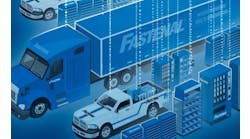The U.S. path to the R&D of the future is emerging from a slowing economy with total funding for R&D expected to increase just 3.3% from the $355 billion funded in 2007 to the $367 billion expected for 2008. Contributing factors start with the globalization of R&D wealth, says the annual Battelle/R&D Magazine study. Other factors include:
- Restructuring of the major corporate R&D approaches in industry,
- Significant growth of the practice of offshore outsourcing of R&D,
- Shift in federal government priorities as a result of world events, and
- Growth of the federal deficit.
"There is little doubt that there are some basic problems facing the U.S. research environment, not the least of which include consideration of energy, environment and the economy," says Battelle's senior researcher and study co-author Jules Duga. "And to a degree not seen in recent years, the average person on the street is calling for long-term relief from high energy costs, improved (but not intrusive) security and resolution of environmental problems."
The researcher's estimate for global R&D spending is expected to reach $1.2 trillion in 2008, 7.6% higher than 2007. Worldwide spending exceeded $1 trillion in 2006, Duga reports.
China is a noteworthy performer with growth of 24% expected for 2008, to total $216.8 billion. That's about 18% of global spending, up from 14% as recently as two years ago, Duga notes.
In the U.S. study industrial performance of R&D in 2008 is expected to reach $258.7 billion in 2008, an increase of 3.4% over 2007 levels of $250.3 billion. Offshore outsourcing has become a game-changer. The study describes the growing practice as a complex weave of relationships, facilities, practices, opportunities and threats.
Increased funding is expected for the following industries: biological and diagnostics, pharmaceutical preps and chemicals and allied products.
Declining support is anticipated for such industries as motor vehicles and car bodies, electronic measurement and testing instruments, other electronics and agricultural chemicals.
Evolving Corporate R&D Metrics
| Top 10 R&D Metrics Used by Industry, 1998 | |
| 1. R&D spending as a percentage of sales | 76% |
| 2. New products completed/released | 68% |
| 3. Number of approved projects ongoing | 61% |
| 4. Total active products supported | 54% |
| 5. Total patents filed/pending/awarded | 51% |
| 6. Current-year percentage of sales due to new products released in past x years | 48% |
| 7. Percentage of resources/investment dedicated | 46% |
| 8. Percentage of increase/decrease in R&D head count | 43% |
| 9. Percentage of resources/investment dedicated to sustaining products | 39% |
| 10. Average development cost per projects/product | 39% |
| Top 10 R&D Metrics Used by Industry, 2008 | |
| 1. R&D spending as a percentage of sales | 77% |
| 2. Total patents filed/pending/awarded/rejected | 61% |
| 3. Total R&D headcount | 59% |
| 4. Current-year percentage sales due to new products released in past x years | 56% |
| 5. Number of new products released | 53% |
| 6. Number of products/projects in active development | 47% |
| 7. Percentage resources/investment dedicated to new product development | 41% |
| 8. Number of products in defined/planning/estimation stages | 35% |
| 9. Average project ROI -- return on investment or average projects payback | 31% |
| 10. Percentage increase/decrease in R&D headcount | 31% |



